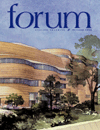
Topics include the use of ethics in the EFL classroom, tips for reading extensively, native language intrusions, vocabulary work, an integrated lesson plan for "For Life's Sake" by Linda Hogan, and a brief history of the First Americans.
For international subscriptions of English Teaching Forum please contact the Public Affairs or Cultural Affairs section of the U.S. Embassy in your country.
U.S. Subscriptions: English Teaching Forum is exempted from the Congressional restriction on distribution of Department of State-produced materials in the United States. U.S. residents who want to order the printed edition can order from the U.S. Superintendent of Documents.
If students are not meeting their goals, it may be that the reason is non-linguistic. Motivation is an important factor that teachers need to consider. The writer argues that carefully chosen ethics cases can motivate timid students to speak out by removing their fear of making mistakes and by encouraging them to talk about heart-felt beliefs. Since ethics cases may not have clear right and wrong answers, this sets them apart from other discussion topics. Debate will foster critical thinking skills.
Format: Text
This article describes freshman university students in China. They started their day with Morning Discussion, a student-hosted discussion of relevant topics. BBC and VOA reports were useful sources. The discussions offered opportunities for negotiation, clarification, and building communicative competence. As students took responsibility for the topics, classroom set up, and participation, their confidence grew. This was very successful, as shown by comments in students’ weekly diaries. Instructors stayed out of debates and did not interrupt to offer corrections.
Format: Text
This article describes how instructors can help their students benefit from extensive reading. Ten tips cover the basic guidelines of extensive reading. Extensive reading can improve learners’ fluency, confidence, and motivation in addition to expanding vocabulary and increasing reading speed. Students should read for overall comprehension and avoid turning to dictionaries with each new word. Modeling extensive reading and reading aloud with enthusiasm may also encourage student interest.
Format: Text
Should L1 use be avoided in an EFL context, where classrooms tend to be linguistically homogeneous and where students have little opportunity to use English outside the classroom? This article reviews research on native language use in the classroom, how it is used (or not used), and the effects. It addresses topics such as impact on learning, teacher guilt, “covert use,” affective and processing benefits, validating the students’ own language, and solidarity with the instructor. The author concludes that a trend toward what Atkinson calls “judicious use” is reasonable.
Format: Text
An instructor shares a plan for extra study that helped struggling students learn vocabulary. Students selected five words from each unit of their class text. A sample of words from the text “Raise the Issues” and reasons for choosing them are included. The five steps used to learn the words were learning pronunciation, recognizing other word forms, using the dictionary, reading the word in context, and using the word in context. Scaffolding for writing with the word is provided. This method was more successful and more popular than extra quizzes for low-achieving students.
Format: Text
“Challenges for ELT from the expansion in teaching children” addresses a growing international trend of teaching English to younger learners (TEYL). Some issues raised are teacher education, student motivation, assessment, and the diversity of levels that exist in secondary school. The second article explores the topic of “Ownership” of English and the NS-NNS distinction. The study asked speakers from India, Malaysia, Singapore, and the United States to rate the acceptability of sentences. Their answers reflected their degree of ownership and perceptions of the target language.
“Teacher Resources” includes summaries of two publications. In “Beyond Methods: Macrostrategies for Language Teaching,” B. Kumaravadivelu suggests ten keys to successful practice, called macrostrategies, and describes how to implement them. This is a teacher-training tool and promotes reflective teaching. “Teaching Online” by Susan Ko and Steve Rossen is useful for instructors who have not had training in teaching online classes. It covers developing the course, adapting an existing course to an online course, methods for this new educational environment, and more.
In “For Life’s Sake,” author Linda Hogan provides the reader with a view of the cultural influences that have made her into the poet, essayist, and storyteller she is today. She describes how her ancestors and the beliefs she inherited as a Native American have inspired her choice of topics and shaped her writing into its unique style. Her love of trees is woven through the article. Hogan’s essay gives students a chance to understand and appreciate the life of a writer from another America. It includes her poem, “Affinity,” on the topic of horses, as well as a glossary of terms.
Format: Text
This lesson plan is for use with “For Life’s Sake.” After introducing the topic of Native Americans in class discussion, students read the article and identify unfamiliar vocabulary. Students may then read again and discuss comprehension questions. Post-reading activities build vocabulary, including idioms, and utilize dictionary and scanning skills. Questions to make connections beyond the text may be used for discussion or writing assignments. There are other projects that integrate language skills, such as writing a poem, considering family customs, and doing Internet research.
Format: Text
This article introduces the history of Native Americans, including accomplishments in building, in social organization, and in art. The article discusses religion and cultural beliefs and the devastating effects that the arrival of Europeans had on Native Americans. The article includes sections on current developments as well, such as the opening of the National Museum of the American Indian and efforts to preserve native cultures and languages. The final section addresses the past practice of forcing children to leave their community to go to boarding schools.
Format: Text